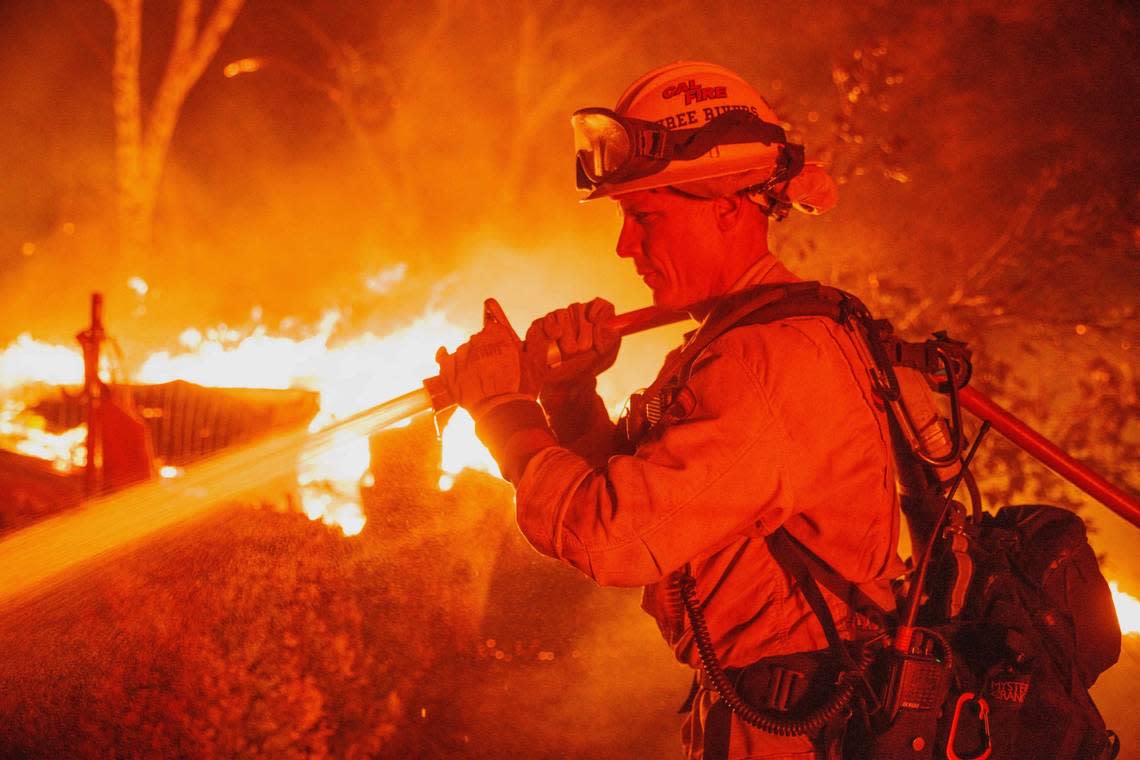Why is California’s Oak Fire spreading so fast? Here are factors experts say are at play
Officials and experts say that low humidity, high fuel load and sloping topography are creating a “perfect recipe” for extreme fire behavior at Central California’s Oak Fire.
The fire exploded overnight in Mariposa County after breaking out Friday afternoon, expanding to 6,500 acres by Saturday morning.
The fast-moving blaze, about an hour from Yosemite National Park, is exhibiting “extreme” fire activity, Cal Fire said in a morning incident report, and has destroyed 10 structures and threatens 2,000 more.
By Sunday morning, the fire had burned 14,281 acres.

Sierra National Forest spokesman Daniel Patterson said Saturday that the fire appeared to be weather and topography driven. A “whole combination of factors” led to explosive growth Friday and overnight, including dry and hot weather, and rugged terrain with an abundance of dry trees and grass.
“There was some decent wind yesterday, and we’re in a 1,200-year drought,” Patterson added. “And all that is the perfect recipe for extreme fire behavior. We have been seeing this in California in recent years.”
Oak Fire displays unusual nighttime behavior
California’s blazes tend to slow overnight, when temperatures drop and humidity rises. But the Oak Fire burned actively through the night, Cal Fire said, amid poor humidity recovery and hotter than normal temperatures.
Crews working to establish containment lines must deal with steep topography that is allowing the blaze to make quick runs. Crews also have to contend with abundant sources of fuel. The area in which the fire is burning — near Jerseydale and Bootjack — has not burned since 1924, Crystal Kolden, a pyrogeographer and a professor at UC Merced, said on Friday.
Kolden, who studies wildfire, added that the Oak Fire flared so quickly due to three primary factors: fuel load, heat and the very dry air due to a 108-degree day.
Fire spreads in all directions
Daniel Swain, a climate scientist and fire expert at UCLA, wrote on social media Saturday that an “interesting and complicated” aspect of the Oak Fire’s initial explosion is that it was able to spread in every direction, both uphill and downhill. Swain attributed the phenomenon to the dry fuel load from the ongoing drought.
The fire was driven by some wind Friday, which let up into Saturday, Patterson said. But Swain said on social media that the lack of wind may not slow the blaze, which appears to be “strongly fuels and topography-dominated.”
“With (the Oak Fire), streak of relatively modest and non-destructive wildfires in CA so far this season appears to be over,” Swain wrote in a social media post. “This continues to be an intense & fast-moving fire.”
The Fresno Bee’s Bryant-Jon Anteola contributed to this story.
With #OakFire, streak of relatively modest and non-destructive wildfires in CA so far this season appears to be over. This continues to be an intense & fast-moving fire, and is now burning into the wildland-urban interface, with some level of structure loss already. #CAwx #CAfire pic.twitter.com/E4ffz46hzd
— Daniel Swain (@Weather_West) July 23, 2022
